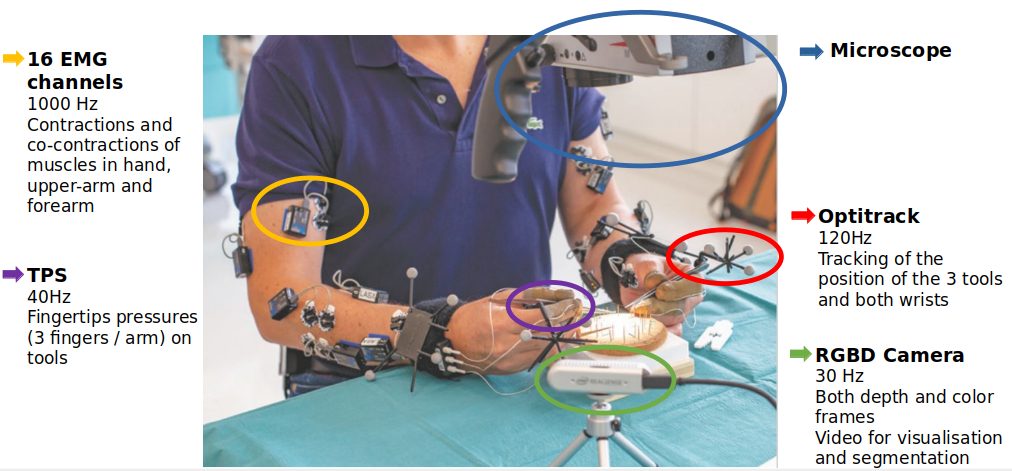| Type | Semester project |
| Split | 50% theory, 30% implementation, 20% experimentation |
| Knowledge | Programming skills: Basic Python. Common python ml libraries and data analysis is a plus |
| Subjects | EMG Signal, Signal Pre- and Post-Processing, Classifiers |
| Supervision | Soheil Gholami |
If you are interested, please contact us 1 month prior to the start of the semester

A recent trend exists in surgical training to objectively assess the trainees’ skills and performance instead of using traditional methods involving subjectivity and bias problems. This quantitative, objective assessment is essential to provide practical feedback and estimate surgeons’ proficiency. This project aims to systematically analyze the arms’ muscular activities (EMG signals) recorded from a microsurgical anastomosis task. The student investigates the state-of-the-art EMG classification techniques in the context of surgery, to differentiate the inherent categories amongst the obtained EMG signals’ features.
Approach
- Exploring the common features used with EMG signals.
- Exploring the common classification techniques used with EMG signal’s features.
- Comparative study between these approaches and finding the most suited method to be used within the surgical context.
Expectation
- The student knows Python and learns (or knowing in advance is a plus) its common data analysis and machine learning libraries.
- The student will learn about different classification techniques [e.g., Support Vector Machine (SVM)].
References
[1] Oskoei, M.A. and Hu, H., 2008. Support vector machine-based classification scheme for myoelectric control applied to upper limb. IEEE transactions on biomedical engineering, 55(8), pp.1956-1965.